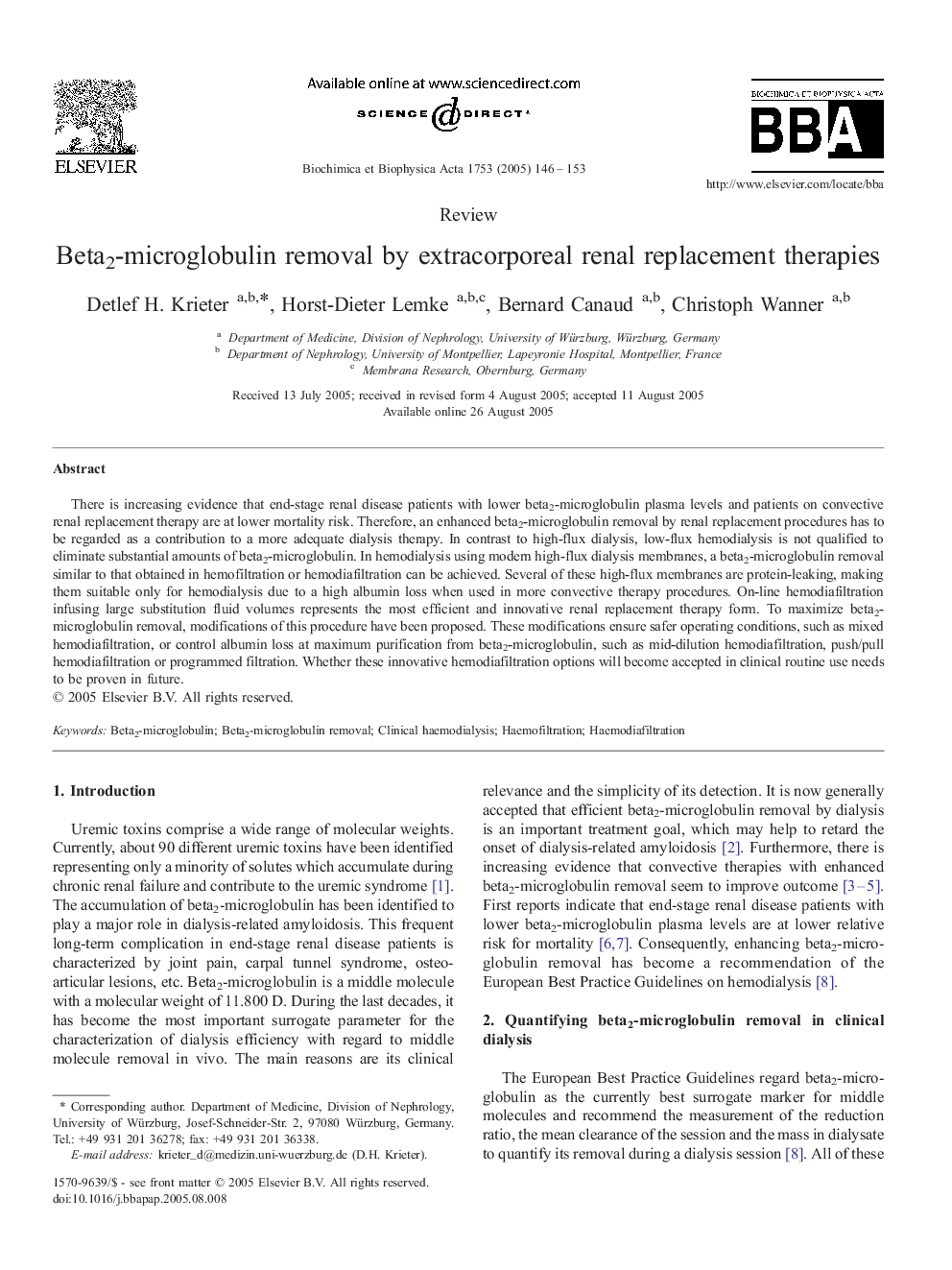| Article ID | Journal | Published Year | Pages | File Type |
|---|---|---|---|---|
| 10537585 | Biochimica et Biophysica Acta (BBA) - Proteins and Proteomics | 2005 | 8 Pages |
Abstract
There is increasing evidence that end-stage renal disease patients with lower beta2-microglobulin plasma levels and patients on convective renal replacement therapy are at lower mortality risk. Therefore, an enhanced beta2-microglobulin removal by renal replacement procedures has to be regarded as a contribution to a more adequate dialysis therapy. In contrast to high-flux dialysis, low-flux hemodialysis is not qualified to eliminate substantial amounts of beta2-microglobulin. In hemodialysis using modern high-flux dialysis membranes, a beta2-microglobulin removal similar to that obtained in hemofiltration or hemodiafiltration can be achieved. Several of these high-flux membranes are protein-leaking, making them suitable only for hemodialysis due to a high albumin loss when used in more convective therapy procedures. On-line hemodiafiltration infusing large substitution fluid volumes represents the most efficient and innovative renal replacement therapy form. To maximize beta2-microglobulin removal, modifications of this procedure have been proposed. These modifications ensure safer operating conditions, such as mixed hemodiafiltration, or control albumin loss at maximum purification from beta2-microglobulin, such as mid-dilution hemodiafiltration, push/pull hemodiafiltration or programmed filtration. Whether these innovative hemodiafiltration options will become accepted in clinical routine use needs to be proven in future.
Related Topics
Physical Sciences and Engineering
Chemistry
Analytical Chemistry
Authors
Detlef H. Krieter, Horst-Dieter Lemke, Bernard Canaud, Christoph Wanner,
